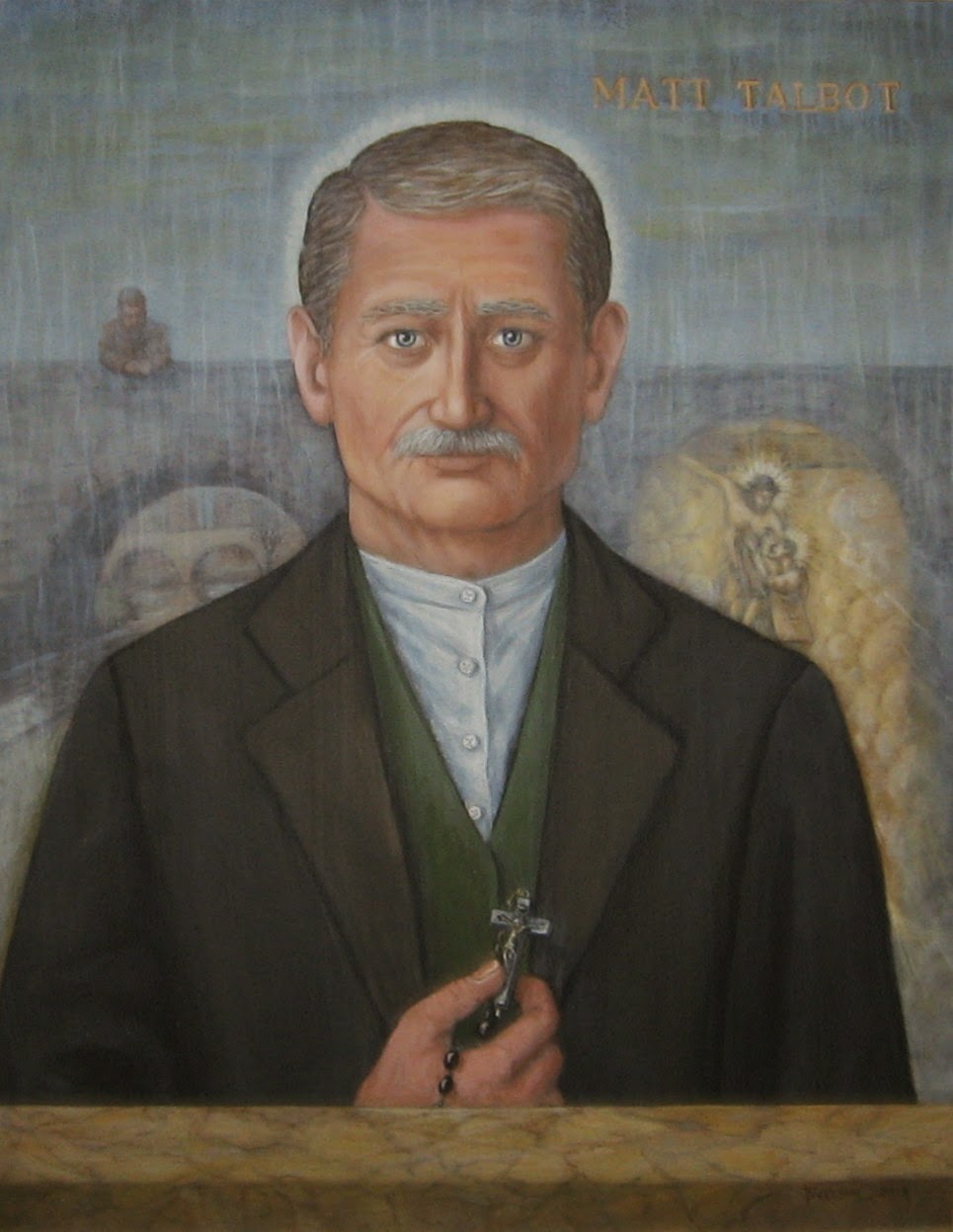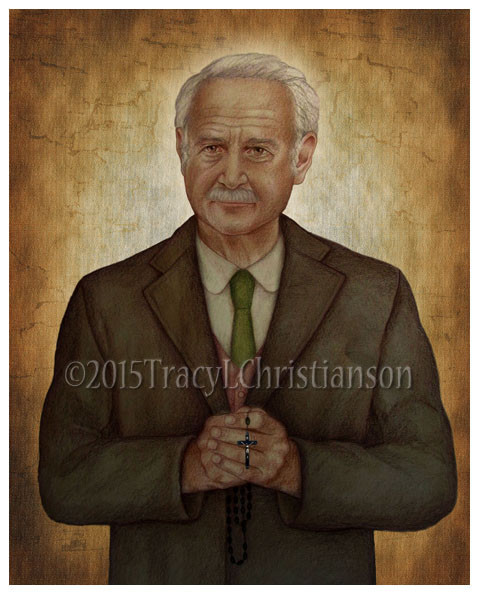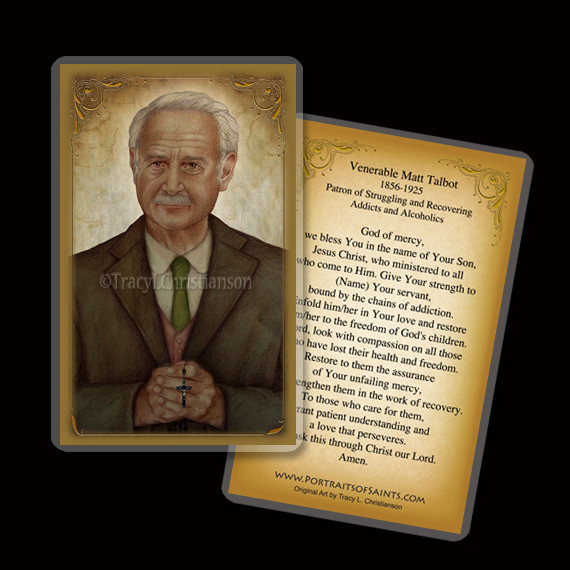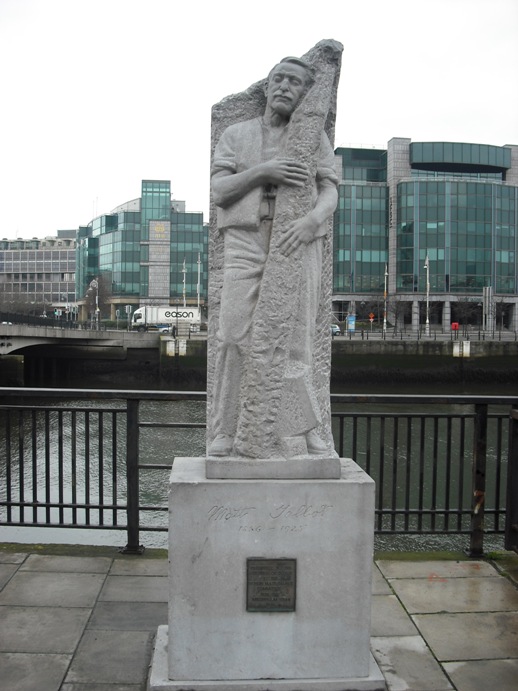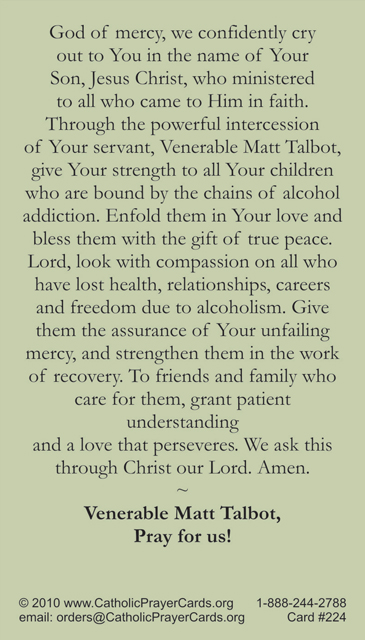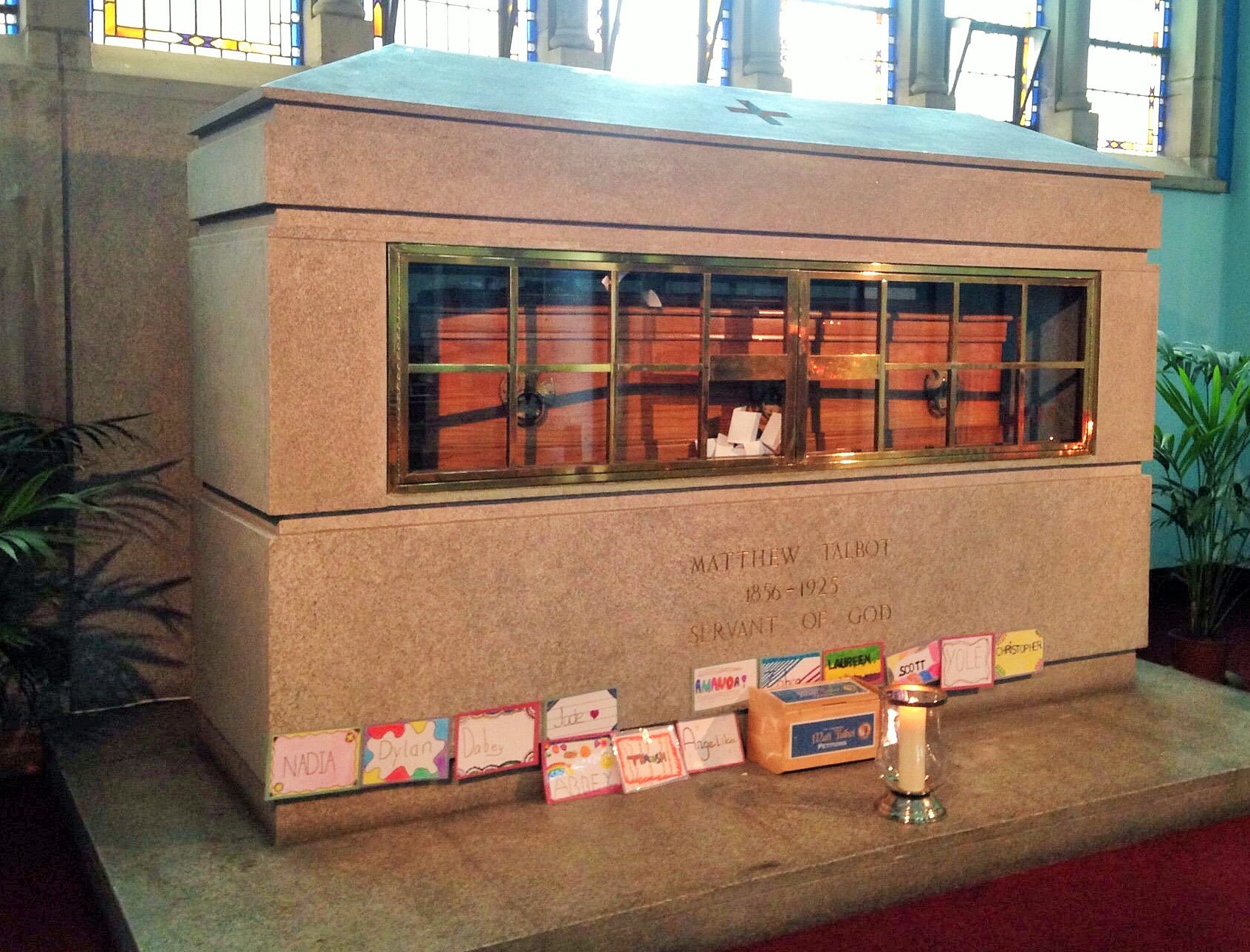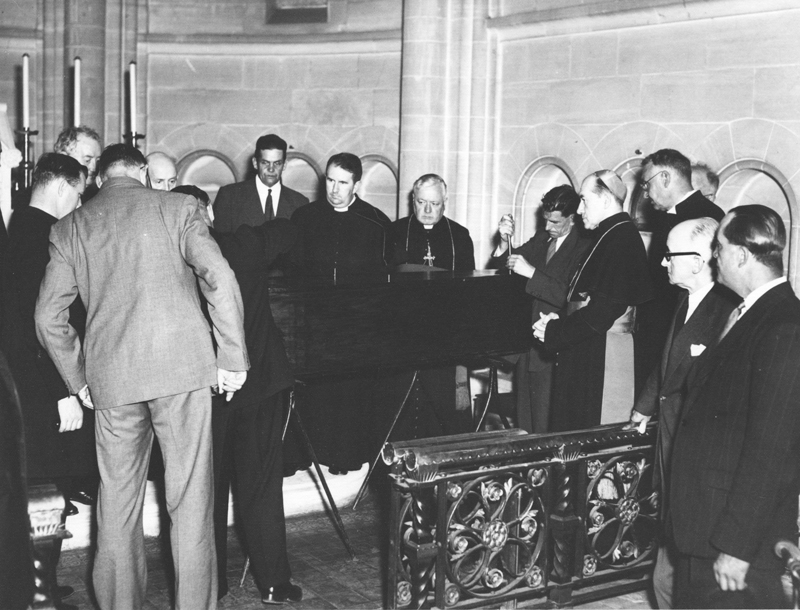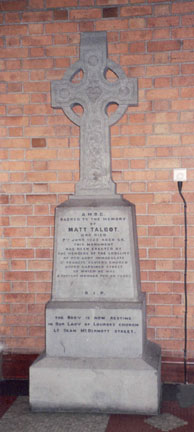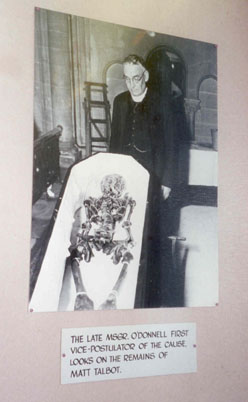
-Chinese martyrs of the Boxer Rebellion icon, please click on the image for greater detail.
“God doesn’t require us to succeed, He only requires that you try.”
― St Teresa of Calcutta
What do Catholic martyrs do? They sing!!!
“St. Mark Ji Tianxiang couldn’t stay sober, but he could keep showing up.
St. Mark Ji Tianxiang was an opium addict. Not only had he been an opium addict. He was an opium addict at the time of his death.
For years, Ji was a respectable Christian, raised in a Christian family in 19th-century China. He was a leader in the Christian community, a well-off doctor who served the poor for free. But he became ill with a violent stomach ailment and treated himself with opium. It was a perfectly reasonable thing to do, but Ji soon became addicted to the drug, an addiction that was considered shameful and gravely scandalous.
As his circumstances deteriorated, Ji continued to fight his addiction. He went frequently to confession, refusing to embrace this affliction that had taken control of him. Unfortunately, the priest to whom he confessed (along with nearly everybody in the 19th century) didn’t understand addiction as a disease. Since Ji kept confessing the same sin, the priest thought, that was evidence that he had no firm purpose of amendment, no desire to do better.
Without resolve to repent, sincere remorse, and resolve to sin no more, confession is invalid, and absolution, required for receiving the Eucharist, is denied.
After a few years, Ji’s confessor told him to stop coming back until he could fulfill the requirements for confession. For some, this might have been an invitation to leave the Church in anger or shame, but for all his fallenness, Ji knew himself to be loved by the Father and by the Church. He knew that the Lord wanted his heart, even if he couldn’t manage to give over his life. He couldn’t stay sober, but he could keep showing up.
And show up he did, for 30 years. For 30 years, he was unable to receive the sacraments. And for 30 years he prayed that he would die a martyr. It seemed to Ji that the only way he could be saved was through a martyr’s crown.
In 1900, when the Boxer Rebels began to turn against foreigners and Christians, Ji got his chance. He was rounded up with dozens of other Christians, including his son, six grandchildren, and two daughters-in-law. Many of those imprisoned with him were likely disgusted by his presence there among them, this man who couldn’t go a day without a hit. Surely he would be the first to deny the Lord.
But while Ji was never able to beat his addiction, he was, in the end, flooded with the grace of final perseverance. No threat could shake him, no torture make him waver. He was determined to follow the Lord Who had never abandoned him.
As Ji and his family were dragged to prison to await their execution, his grandson looked fearfully at him. “Grandpa, where are we going?” he asked. “We’re going home,” came the answer.
Ji begged his captors to kill him last so that none of his family would have to die alone. He stood beside all nine of them as they were beheaded. In the end, he went to his death singing the Litany of the Blessed Virgin Mary. And though he had been away from the sacraments for decades, he is a canonized saint.
St. Mark Ji Tianxiang is a beautiful witness to the grace of God constantly at work in the most hidden ways, to God’s ability to make great saints of the most unlikely among us, and to the grace poured out on those who remain faithful when it seems even the Church herself is driving them away.
On July 9, the feast of St. Mark Ji Tianxiang, let’s ask his intercession for all addicts and for all those who are unable to receive the sacraments, that they may have the courage to be faithful to the Church and that they may always grow in their love for and trust in the Lord. St. Mark Ji Tianxiang, pray for us!”
Litany of the Blessed Virgin Mary
Lord, have mercy on us. Christ have mercy on us.
Lord, have mercy on us. Christ hear us
Christ, graciously hear us.
God the Father of heaven, Have mercy on us.
God the Son, Redeemer of the world, Have mercy on us.
God the Holy Spirit, Have mercy on us.
Holy Trinity, One God, Have mercy on us.
Holy Mary, Pray for us.
Holy Mother of God, Pray for us.
Holy Virgin of Virgins, Pray for us.
Mother of Christ, Pray for us.
Mother of the Church, Pray for us.
Mother of Divine Grace, Pray for us.
Mother most pure, Pray for us.
Mother most chaste, Pray for us.
Mother inviolate, Pray for us.
Mother undefiled, Pray for us.
Mother most amiable, Pray for us.
Mother most admirable, Pray for us.
Mother of Good Counsel, Pray for us.
Mother of our Creator, Pray for us.
Mother of our Savior, Pray for us.
Mother of mercy, Pray for us.
Virgin most prudent, Pray for us.
Virgin most venerable, Pray for us.
Virgin most renowned, Pray for us.
Virgin most powerful, Pray for us.
Virgin most merciful, Pray for us.
Virgin most faithful, Pray for us.
Mirror of justice, Pray for us.
Seat of wisdom, Pray for us.
Cause of our joy, Pray for us.
Spiritual vessel, Pray for us.
Vessel of honor, Pray for us.
Singular vessel of devotion, Pray for us.
Mystical Rose, Pray for us.
Tower of David, Pray for us.
Tower of ivory, Pray for us.
House of gold, Pray for us.
Ark of the Covenant, Pray for us.
Gate of Heaven, Pray for us.
Morning star, Pray for us.
Health of the Sick, Pray for us.
Refuge of sinners, Pray for us.
Comforter of the afflicted, Pray for us.
Help of christians, Pray for us.
Queen of angels, Pray for us.
Queen of patriarchs, Pray for us.
Queen of prophets, Pray for us.
Queen of apostles, Pray for us.
Queen of martyrs, Pray for us.
Queen of confessors, Pray for us.
Queen of virgins, Pray for us.
Queen of all saints, Pray for us.
Queen conceived without original sin, Pray for us.
Queen assumed into Heaven, Pray for us.
Queen of the Holy Rosary, Pray for us.
Queen of families, Pray for us.
Queen of peace, Pray for us.
Lamb of God, Who takest away the sins of the world, Spare us, O Lord.
Lamb of God, Who takest away the sins of the world, Graciously hear us, O Lord.
Lamb of God, Who takest away the sins of the world, Have mercy on us.
Pray for us, O Holy Mother of God, That we may be made worthy of the promises of Christ.
Let us pray- Grant, we beseech Thee, O Lord God, that we Thy servants may enjoy perpetual health of mind and body, and by the glorious intercession of the Blessed Mary, ever Virgin, be delivered from present sorrow and enjoy everlasting happiness. Through Christ Our Lord. Amen

-by Erik Durant, 2017, 3/4 scale, 42 in high

-by Brian Fraga, contributing editor to Our Sunday Visitor
“The opium pipe rests in the half-open hands of St. Mark Ji Tianxiang, who looks up to heaven, as if to plead, “Please, take this away from me.”
“He holds it out in a sort of way like, ‘I don’t want this thing,’” said Erik Durant, a Massachusetts-based artist who designed a striking sculpture of the 19th-century Chinese layman who died as a martyr in 1900.
Durant told Our Sunday Visitor that he created the sculpture a few years ago after a local parish priest reached out to him. Biographical details were scarce.
“Basically all I got was the timeframe when he lived, that he was a known opium user for over 30 years and that because of the drug usage, he never received Communion yet continued to regularly go to church,” Durant said.
Father David Deston, a priest of the Diocese of Fall River, Massachusetts, saw in St. Mark Ji a symbol of hope for people struggling with drug addiction.
“His story is amazing, just absolutely amazing,” Father Deston said. “It’s one that I think should be out there more.”
St. Anne Church and Shrine
St. Anne Shrine at 818 Middle Street in Fall River, Massachusetts, houses the statue of St. Mark Ji Tianxiang. The main church was closed in May 2015 when a large piece of plaster fell off the wall during a Mass. The church ceased to be a diocesan parish when it closed Nov. 25, 2018. The St. Anne Preservation Society is raising funds to stabilize the building and restore the building as a shrine. The Diocese of Fall River and the St. Anne’s Preservation Society entered into an agreement on July 1, 2019, through which the shrine will be under the care and oversight of the society. The basement shrine reopened July 4. Masses will be celebrated a minimum of twice per year. The shrine is open Monday through Sunday, 8 a.m. to 5 p.m. for the recitation of the Rosary, Bible study and special programs.
Denied the Eucharist
St. Mark Ji Tianxiang struggled with opium addiction for almost half of his 66 years of life. A committed Catholic, he continually confessed to smoking opium, but the graces of the sacrament were not enough to deliver him from his addiction.
“He was definitely hooked. He was hooked on what was essentially a pure form of heroin for decades,” said Michael Rayes, a Catholic counselor in Phoenix.
St. Mark Ji’s confessor — without the benefit of modern science that has revealed drug addiction to be a disease that changes brain chemistry — eventually withheld absolution because he did not believe that St. Mark Ji had a firm purpose of amendment to stay away from the opium pipe.
For the last 30 years of his life, St. Mark Ji was denied the reception of the Eucharist, but he still grew in holiness.
“He never gave up, even when he couldn’t really have a full sacramental experience,” Rayes said. “I’m sure he made plenty of spiritual communions, and that must have hurt his heart.”
Believing that martyrdom was his only way to heaven, St. Mark Ji prayed for and received the martyr’s crown when he was killed during the anti-Christian persecutions of the Boxer Rebellion.
“Here, you have St. Mark Ji, who stops receiving the Eucharist, and yet he’s still a saint who was growing spiritually,” said Dr. Gregory Bottaro, executive director of the Catholic Psych Institute, a Catholic psychology practice based in Connecticut.
Bottaro told Our Sunday Visitor that St. Mark Ji’s complicated life challenges modern Catholics to think deeper and “outside the box” about the Communion of Saints, life, holiness, the sacraments and the Catholic faith itself.
“It’s stories like his that help to recalibrate our sense of humanity and our relationship with God,” Bottaro said.
Gripped by addiction
The short official biographies indicate that St. Mark Ji Tianxiang was born in 1834 in the apostolic vicariate of Southeastern Zhili, China. He was raised in a Christian family and grew up to become a physician and a respected member of his community.
As a doctor, St. Mark Ji served the poor for free. However, in his mid-30s, he became ill with a serious stomach ailment and treated himself with opium, which was a common pain medicine, but it was but highly addictive.
St. Mark Ji soon was gripped by opium addiction, which in 19th-century China was considered to be shameful and a grave scandal. Similar to how heroin addicts today often are reviled and called junkies, opium addicts then in China were scorned.
Black-and-white photos of Chinese opium addicts from the late 1800s show they were often gaunt, with hollowed-out eyes, sunken cheekbones and the outlines of their rib cages clearly visible through the skin.
“They’re all emaciated and almost skeletal looking,” said Durant, who studied 19th-century photographs of Chinese opium addicts to get an idea of how St. Mark Ji may have looked after 30 years of smoking opium.
“I basically came up with an amalgamation,” Durant said. “I used my knowledge of anatomy and had a model pose for a general gesture. I basically stripped the muscle off that person in order to come up with an image.”
St. Mark Ji prayed for deliverance, but the chains of addiction were never removed from him. Still, he fought it, frequently going to confession. But after a few years, the priest to whom St. Mark Ji confessed told him to stop coming back until he was serious about stopping his sin.
“One of the elements that struck me about his story was his support system did not understand his addiction, and essentially they rejected him,” said Rayes, who chose St. Mark Ji as the patron for his counseling practice, Intercessory Counseling & Wellness in Phoenix.
Today, priest-confessors have the benefit of modern science and psychology when it comes to understanding that drug addiction is a disease. In light of that understanding, Bottaro said the Church is “constantly developing” in its application of eternal truth.
“Obviously, truth doesn’t change, but the depth of understanding matures,” Bottaro said. “And here you have a perfect example where we didn’t have the sort of human understanding of science, from brain science studies and social psychology, of understanding the effect of drugs and understanding what’s happening in the brain.”
Being denied access to the sacraments and shunned by one’s community would arguably be enough to discourage most people from wanting to be involved with the Church. But St. Mark Ji remained a practicing Catholic, even if he could not beat his addiction.
“The Church, his confessors, didn’t understand the nature of addiction, and yet he persevered in his faith,” Rayes said. “So that, I think, is a really strong example for those today who are struggling with addiction, because you can feel so alone.”
“He did what he thought was the right thing to do,” Father Deston added. “He struggled to live a good life. He attended Mass regularly. He never stopped believing in God’s mercy. I think his martyrdom just grew out of his own faith. It wasn’t a means to an end for him.”
Martyrdom
Between 1899 and 1901, toward the end of the Qing dynasty, the Boxer Rebellion broke out in China as Chinese nationalists cracked down against foreigners and Christians. During the two-year uprising, more than 32,000 Chinese Christians and 200 foreign missionaries were massacred.
In 1900, the Boxers arrested St. Mark Ji, rounding him up with dozens of other Christians, including his son, six grandchildren and two daughters-in-law. At trial, St. Mark Ji was given the opportunity to apostatize, but he refused.
He was led to his execution with the other members of his family on July 7, 1900. He begged his captors to kill him last so that none of his relatives would die alone. As he awaited his own death, he sang the Litany of the Blessed Virgin Mary.
“When we have this story of St. Mark, it’s so out there that that’s it’s almost impossible to tidy it up and make it neat and pretty for a little prayer card,” Bottaro said. “His story is so central on the messiness of his life that you can’t avoid that aspect of it.”
Sainthood
Pope Pius XII beatified St. Mark Ji along with 120 other Chinese martyrs on Nov. 24, 1946. St. Pope John Paul II canonized him on Oct. 1, 2000. His feast day is July 9.
In more recent years, St. Mark Ji’s life story has resonated with many who have been affected by the national opioid crisis. According to the National Institute on Drug Abuse, more than 130 people in the United States die each day after overdosing on opioids.
For many today who suffer from drug addiction, and people who see their loved ones struggling with the disease, St. Mark Ji has become a patron.
“People would leave notes by his statue. Occasionally, I would straighten them up and read them. Many of them were just heartbreaking, where people were talking about their own struggles or asking for prayers for their loved ones,” said Father Deston, who had the statue of St. Mark Ji placed in his former parish’s basement shrine.
Durant said a priest in Pittsburgh called him and asked for a copy of the sculpture. Employees from an addiction center in New Hampshire traveled to St. Anne Shrine in Fall River, Massachusetts, to see the statue.
“I think he’s a fascinating and important character,” Durant said.
“Drug addiction, then or now, is one of the issues of our time,” Durant said. “It’s so big, affecting so many people. It affects all ages, races, socioeconomic status. It affects all of us. It’s important, whether you’re Catholic or not.”
I am a member of Al-anon, attending weekly meetings for over a year now, when not pandemic bound. The Catholic Church views substance abuse as a sin, even though a disease of the mind and body. There are many kinds of addictions. They are in conflict with the freedom of God’s children, the gift of life and the goodness of life, all created from and by the goodness of God Himself. Addicts today are not excluded from the sacraments because they are addicts. However, a sincere Act of Contrition, immediately, and the sacrament of reconciliation should be sought quickly, to remain as much in the state of grace as possible considering mortality.
“Therefore, in order to keep me from becoming conceited, I was given a thorn in my flesh, a messenger of Satan, to torment me. Three times I pleaded with the Lord to take it away from me. But He said to me, “My grace is sufficient for you, for My power is made perfect in weakness.” Therefore, I will boast all the more gladly about my weaknesses, so that Christ’s power may rest on me. That is why, for Christ’s sake, I delight in weaknesses, in insults, in hardships, in persecutions, in difficulties. For when I am weak, then I am strong.” -1 Cor 12:7-10

-please click on the image for greater detail
St Mark Li Tianxiang is called the ‘trier’ because he never gave up trying to overcome his addiction and be able to receive the sacraments again.
Nonetheless, Mark always attended Mass and lived a truly committed and devout Catholic life. It is said that he helped the sick and dying free of charge or only ever accepted what his patients were able to give him for his service.
St Mark Li Tianxiang, pray for us!!! Intercede with God on our behalf for whatever obstacles prevent us from being good servants of the Lord, particularly those sins to which we are truly addicted (pride, greed, wrath, envy, lust, gluttony, sloth, substance abuse, timidity, tepidity, lukewarmness in Your service, fear, etc.) or cannot rid ourselves of through His most generous and powerful grace; such is our too, too strong attachment to our sins. Jesus, help us!!! Jesus, save us!!!
Love, & His healing,
Matthew


